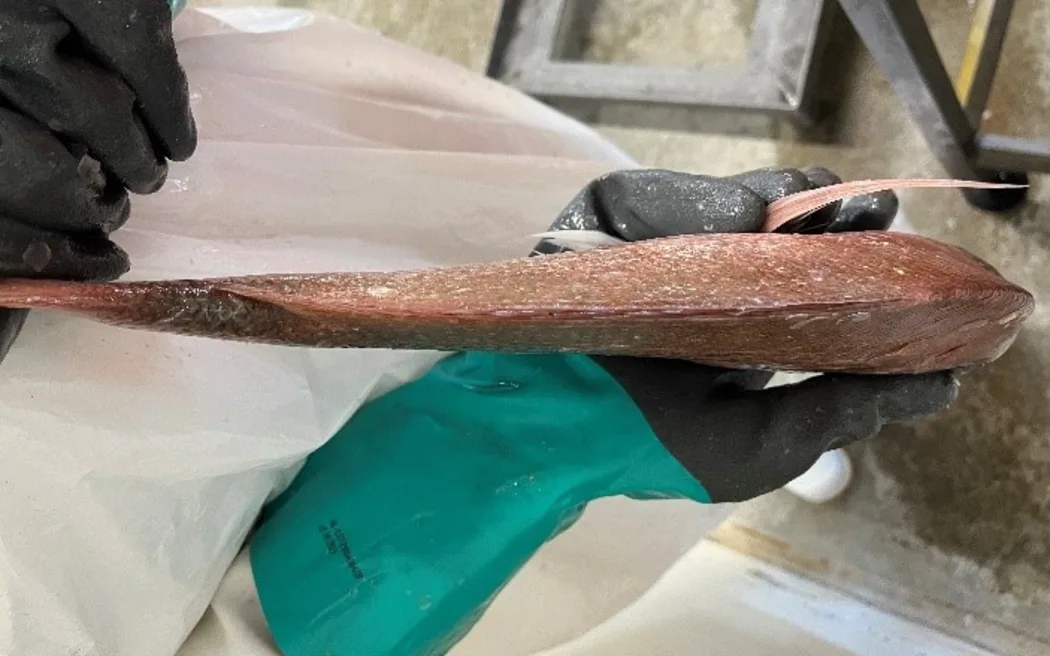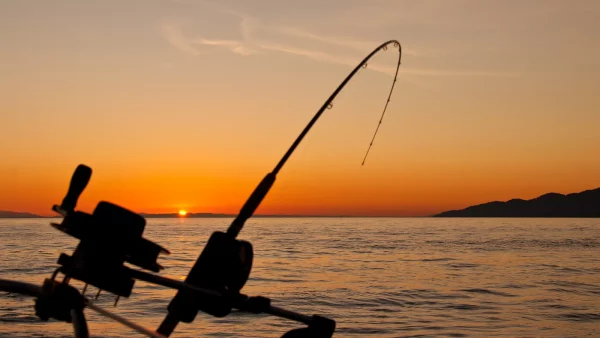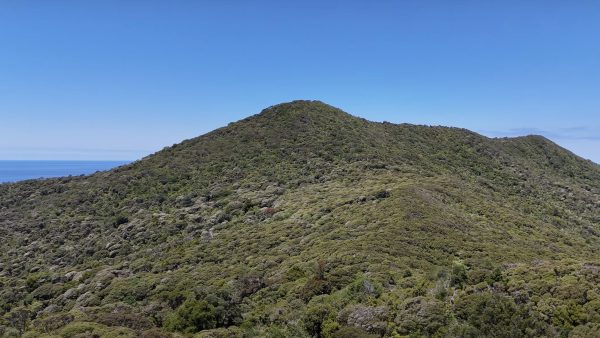A fish affected by milky white flesh syndrome showing a skinny tail. Photo / NIWA / Rikki Taylor
NIWA has been called in to investigate evidence of snapper in the Hauraki Gulf suffering from milky white flesh syndrome.
The Ministry for Primary Industries (MPI) said the syndrome had been affecting snapper in the Hauraki Gulf and East Northland areas, and were reports of it in other finfish species, such as trevally. The condition can cause nutrient deficiencies.
A report from Biosecurity New Zealand, obtained by Newshub, said some snapper were showing signs of prolonged starvation.
MPI has contracted NIWA to investigate commercial catch samples, and recreational catch is also being monitored.
NIWA fisheries scientist Dr Darren Parsons said there had been reports of the syndrome in halibut in Alaska, but it was relatively new in New Zealand.
In August 2022 fishers began reporting the flesh of snapper was white, opaque and in some cases mushy and even slimy, he said.
“We can see externally, when looking at extreme cases of these fish, they’re visibly skinny, the tissue has sunken away.”
Though some have suggested trawling or sediment runoff was to blame, Parsons said the cause wasn’t yet known.
“I don’t see fishing having changed in a way that would contribute to this, but it’s speculation at this stage.”
There was less commercial fishing in the Hauraki Gulf than five years ago, while the syndrome had been reported recently, he said.
One possibility was that it was the result of El Nino and La Nina climate cycles, which change the water mixing and availability of nutrients.
Food safety tests had not shown up any reason why the fish would be unsafe to eat, he said.
“From what I’m hearing from fishers, though, they’re not as palatable … and as a result the commercial fishery has moved away from the areas where these fish have been most commonly caught, which at this stage is the Hauraki Gulf, especially the inner Hauraki Gulf.”
The East Northland coast and a little of the Bay of Plenty were also affected, but snapper stocks on the west coast of the North Island and Nelson were not.
-RNZ








